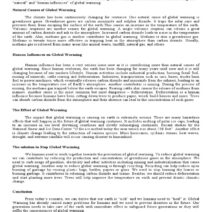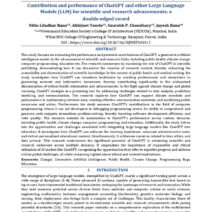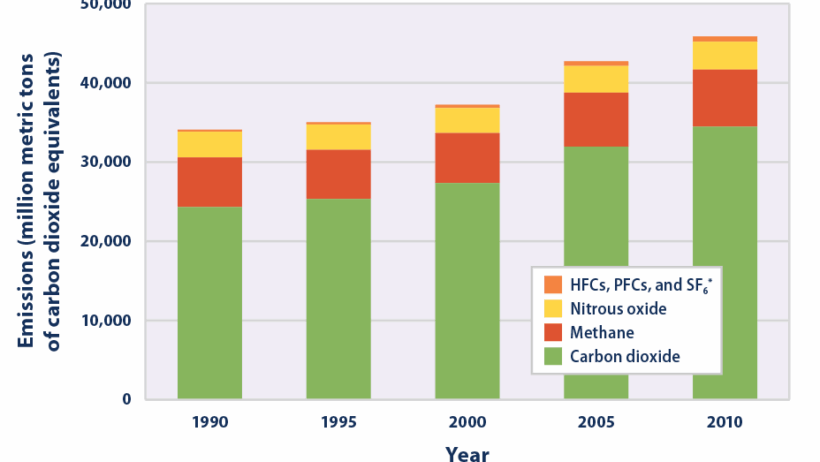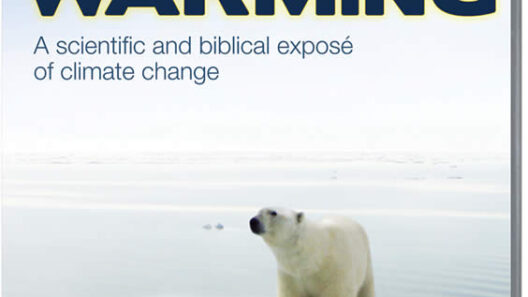The planet Earth is an intricate system, akin to a finely-tuned orchestra, where each instrument plays a crucial role in maintaining harmony. In this complex ensemble, the greenhouse effect and global warming are two fundamental movements, both essential yet distinct. To decode the nuances of the greenhouse effect and understand how it intertwines with global warming is to embark on a journey through the layers of our atmosphere, the radiant sun, and the delicate balance of life itself.
At the heart of this discussion is the greenhouse effect—a phenomenon as vital to the equilibrium of our planet as the rhythm of a heartbeat. This effect occurs when certain gases in the Earth’s atmosphere trap heat from the sun, functioning much like a blanket enveloping a dormant seed in winter. The primary greenhouse gases, including carbon dioxide (CO2), methane (CH4), and nitrous oxide (N2O), are both natural and anthropogenic (human-induced). Without these gases, the Earth would be a frozen wasteland, devoid of life as we know it. However, it is essential to understand that while the greenhouse effect is a natural and necessary process, the intensification of this effect due to excessive greenhouse gas emissions is where the crux of our problems lies.
The greenhouse effect operates like an insatiable sponge, absorbing heat from the sun and preventing it from escaping back into space. This phenomenon can be likened to a greenhouse in which tender plants thrive; the glass structure allows sunlight in while maintaining a warm environment, fostering growth. However, when the concentration of greenhouse gases escalates, this effect enhances unnaturally, leading to unwarranted heating of the planet—this is not merely a benign outcome but a harbinger of profound changes, one of which is global warming.
Global warming is akin to the crescendo of a symphony, a consequence of the greenhouse effect reaching critical levels. As greenhouse gas emissions rise due to human activities—such as the combustion of fossil fuels, deforestation, and industrial processes—the Earth’s average surface temperature begins to rise. This warming trend is meticulously documented and is accelerating at an alarming pace. The Intergovernmental Panel on Climate Change (IPCC) has highlighted that the planet’s temperature has already increased by approximately 1.1 degrees Celsius since the late 19th century, a change that carries dire implications for ecosystems and human civilization alike.
While the greenhouse effect and global warming are inextricably linked, it is crucial to differentiate their implications. The greenhouse effect can be perceived as a benign necessity for life while global warming embodies the alarming sidetrack of this natural process. One serves as a benevolent steward of the climate, while the other emerges as an uninvited guest wreaking havoc in the form of extreme weather patterns, rising sea levels, and ecological disruptions.
The ramifications of global warming are not mere scientific aberrations; they manifest in tangible, everyday experiences. The harrowing tales of wildlife struggling for existence, glaciers melting at an unprecedented rate, and more frequent heatwaves remind us that this is not a distant concern but an urgent reality. In this narrative, the Arctic bears a poignant testimony; they are guardians of the ice, yet as their habitat shrinks, their very existence is threatened.
Looking deeper into the narrative, one finds that the greenhouse effect has been exacerbated by human actions—an unfortunate byproduct of industrial advancement and progress. The story of fossil fuels—coal, oil, and natural gas—illustrates this troubling trend vividly.
These resources, once viewed as the harbingers of modern development, are now recognized as the perilous progenitors of greenhouse gases. The atmosphere is experiencing an unprecedented spike in CO2 levels, surpassing 400 parts per million (ppm)—a concentration not seen in millions of years. Climate scientists are ringing alarm bells, warning that if this trend continues, we may be heading towards a tipping point, beyond which catastrophic changes could become irreversible.
Yet, amid this daunting scenario, a ray of hope illuminates the path forward. Transitioning to renewable energy sources—such as solar, wind, and hydropower—offers a multifaceted solution to mitigate the effects of both the greenhouse effect and global warming. Each advancement in renewable technology represents a note of harmony in the orchestra, urging us towards a more sustainable future. Innovations in energy efficiency, carbon capture techniques, and reforestation initiatives also play critical roles in this transformational symphony. Individuals and communities around the globe are awakening to their collective responsibility to reduce carbon footprints and advocate for systemic changes.
Nevertheless, the challenge remains formidable. The intricate relationship between greenhouse gases and global warming necessitates a global concerted effort—a symphony in which all nations participate in harmony. The Paris Agreement stands as a testament to this aspiration, outlining shared commitments to limit global warming to well below 2 degrees Celsius. However, the efficacy of this agreement hinges on ambitious actions, transparency, and accountability—principles that must echo resoundingly throughout the corridors of power.
To decode the intricacies of the greenhouse effect and global warming is to appreciate the fragility of our planet’s systems. It demands that we recognize our role not just as inhabitants but as stewards of a shared legacy. Each of us has the power to alter the trajectory of this narrative, constructing a more resilient future for generations to come. Just as a conductor guides their orchestra through varying dynamics, we must navigate our actions with intent and purpose, orchestrating a melodious balance between progress and preservation for our blue planet.








